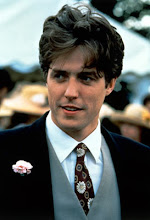By Hugh Ponsington Smythe, lecturer in 1990s Studies at Loughbourough polytechnic
‘Now the 80s are over, the 90s are going to make the 60s look like the 50s.’ Dennis Hopper was very wrong when he said that. He expected a bacchanalian feast. We got a feast of the banal.
Have a look at a few 90s icons: they look just like 80s ones, but with some 40s austerity thrown in. I’m thinking Eurythmics here: Sweet Dreams vs Sweet Dreams (unplugged).
Have a look at a few 90s icons: they look just like 80s ones, but with some 40s austerity thrown in. I’m thinking Eurythmics here: Sweet Dreams vs Sweet Dreams (unplugged).
The pre-millennial angst that characterised the late 90s was surely a re-run of the anxious 20s, rather than the euphoric 1890s, in that it felt like an inter-war era, minus the actual wars.
90s fashion was, in many important ways, simply 80s fashion glimpsed through a dark green gauze, with all the contrast turned down, but still with many of the same shapes and a great deal of taupe. The 80s grown up, as it were. More responsible, and with a mortgage.
90s automotive fashions had yet to achieve the contemporaneousness of Noughties designs (a 90s Saab is just an 80s one, with a smaller wing) and we were a very long way from the digital age, our current decade’s iconic leitmotif.
In many ways, the 90s can be summarised with one item: this shirt, with the Peruvian Inca pattern, by Jean-Paul Gaultier, that I paid £600 for in 1993. It truly reflected both the decade’s aspirations and its failures. The style said that ‘we are now trying to be more aware of the world, by just sticking a new pattern on an over-tailored shirt; we can feel the veneer of a new age’.
Then, when we get it home, we realise that it looks immediately and tragically dated. We learn. We grow. And we’ll then move on to something else, probably minimalism. No wonder Kurt Cobain shot himself.


.jpg)







No comments:
Post a Comment